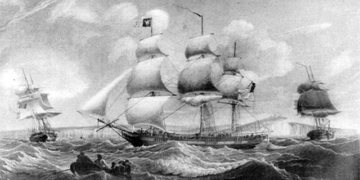The Prime Minister has just recognized 29 artifacts and artifact groups as national treasures (12th batch). Among these, the Thang Long – Hanoi Heritage Conservation Center has 5 national treasures.
1. Decorative Bodhi Leaf with Phoenix Motif from the Ly Dynasty – Thang Long Imperial Citadel
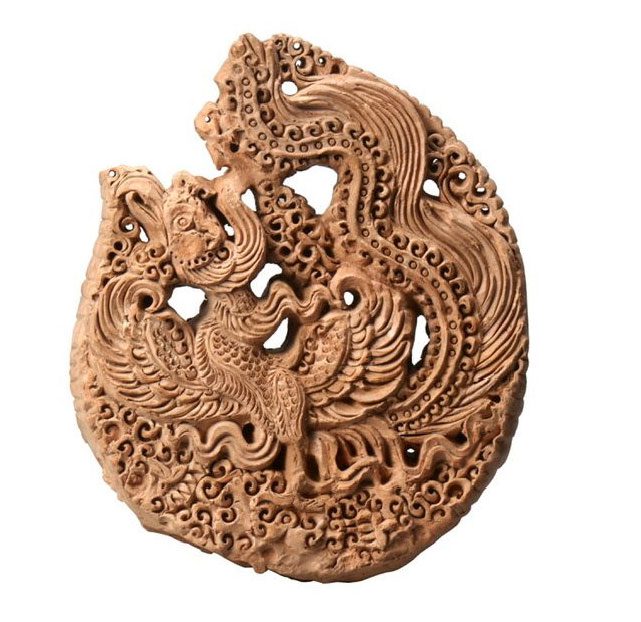
Decorative Bodhi Leaf with Phoenix Motif from the Ly Dynasty.
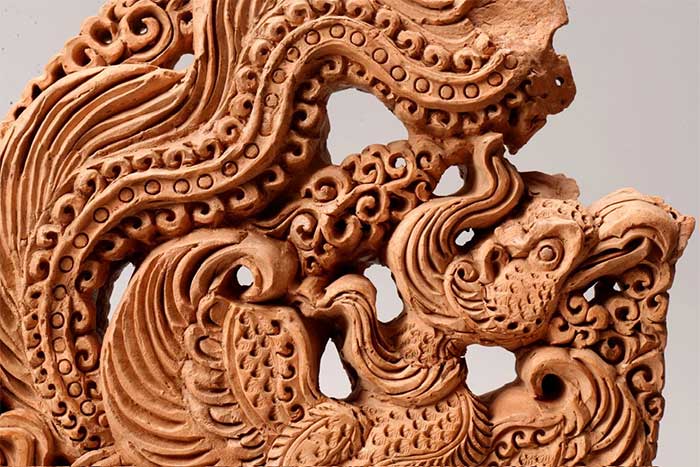
Intricate Pattern on the Bodhi Leaf.
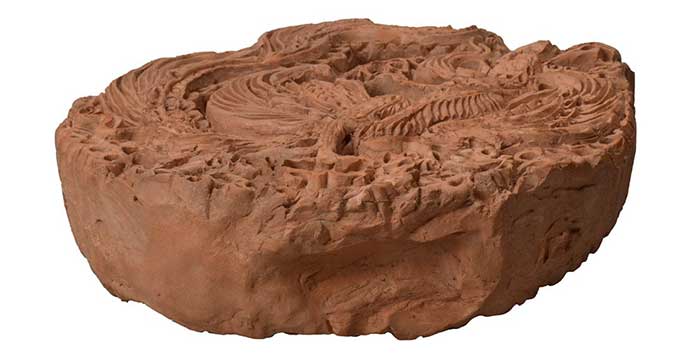
Body of the Bodhi Leaf.
The decorative Bodhi Leaf with a phoenix motif from the Ly Dynasty, found at the Thang Long Imperial Citadel, consists of two parts: the body and the pedestal. The body of the leaf includes the stem and the leaf itself; however, the stem is missing. The leaf has the shape of half a Bodhi leaf, cut longitudinally from the tip to the stem. Both sides are decorated with images of a phoenix dancing among flowers and leaves. The body is partially broken at the top of the leaf, with uneven thickness.
The pedestal of the Bodhi Leaf is missing and has not been restored. Based on the structure of the leaf and comparisons with other similar leaves, it can be inferred that the pedestal would have been structured like an inverted tile but thicker, with a curvature suitable for joining other elements of the roof structure where the Bodhi Leaf was an integral decorative component.
Despite the losses and damages, the decorative Bodhi Leaf with the phoenix motif from the Ly Dynasty at the Thang Long Imperial Citadel remains the most complete and beautiful version discovered to date.
The Bodhi Leaf features a phoenix depicted in a dynamic pose dancing on a lotus flower, with its head held high, beaks touching, one leg raised, and the other serving as a support, creating an impression of it bouncing on a floral base.
2. Tam Khi Inlaid Saber from the Tran Dynasty – Thang Long Imperial Citadel

Tam Khi Inlaid Saber from the Tran Dynasty.
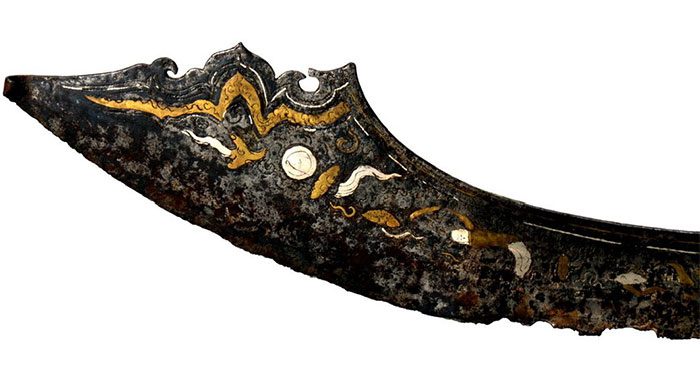
Decorative Patterns on the Saber.
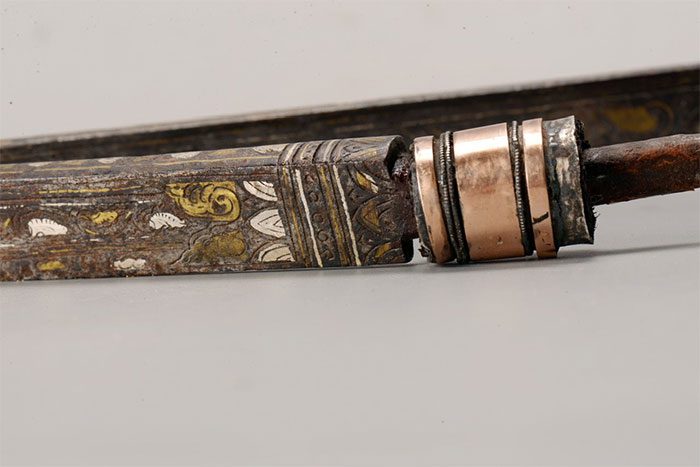
Handle of the Saber.
The Tam Khi Inlaid Saber from the Thang Long Imperial Citadel consists of two parts: the blade and the handle. The handle only retains the inner steel core, measuring 18.5 cm in length, while the guard, pommel, and pin are all missing. Remnants indicate that the handle was originally wrapped in wood, and the upper end connecting to the guard was tightly fastened with a golden-red metal band resembling copper. The band is 1.8 cm long, made of a copper alloy, with a polished surface and edges engraved with intricate braided patterns resembling rope.
The blade of the Tam Khi Inlaid Saber is 64 cm long and consists of three parts: the sharp edge, spine, and tip. Both sides of the blade are adorned with inlaid patterns made from yellow and white metal, set against a steel background that enhances the prominence of the designs.
The decorative patterns on the saber are particularly intricate, with the spine embellished with leaf vine motifs featuring a wavy design running from the handle to the tip, predominantly in white and yellow.
3. Courtesan Pass from the Early Le Dynasty – Thang Long Imperial Citadel
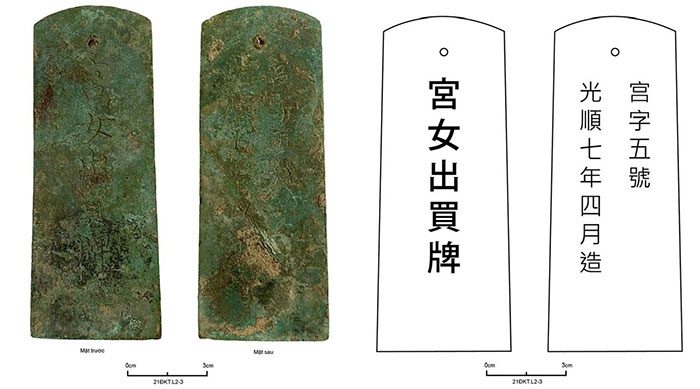
Courtesan Pass from the Early Le Dynasty.
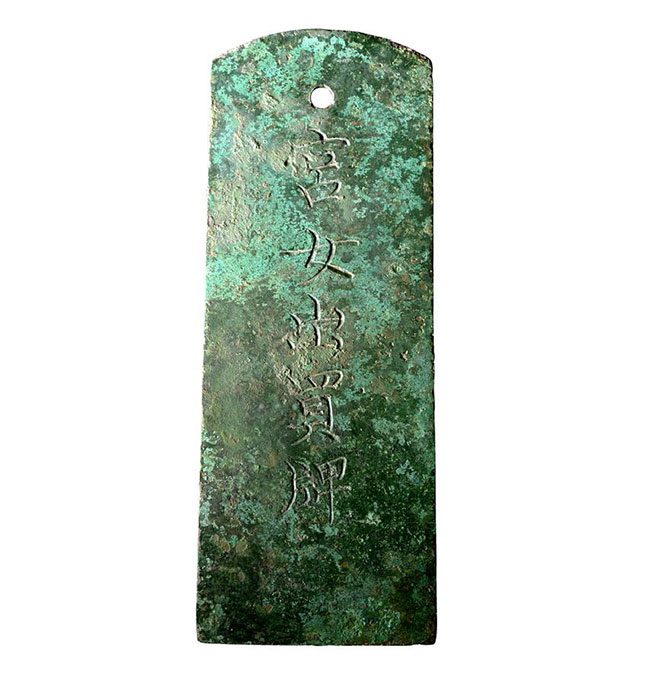
Front Side of the Pass.
The pass is made of a flat, thin, trapezoidal bronze alloy plate, with the two upper corners curved. It measures 12.7 cm in height; the bottom edge is 4.9 cm wide, the top edge is 4.6 cm wide, the thickness at the top is 0.11 cm, and at the bottom is 0.10 cm. The edges are rounded to eliminate sharpness. Along the central axis from top to bottom, there is a small hole 1.3 cm from the top with a diameter of 0.3 cm for threading a strap through.
Both sides are engraved with Chinese characters, with clear and deep inscriptions. The front side features 5 characters 宮女出買牌, meaning “Courtesan Exit Pass.” The characters are arranged vertically in the center of the plate, with larger fonts than the other side. This is the front side of the pass.
The reverse side of the pass has 11 characters arranged in two vertical lines: the first line (from right to left) contains 4 characters 宫字五號, meaning “Palace Number Five”; the second line has 7 characters 光順七年四月造, meaning “Created in the Fourth Month of the Seventh Year of the Quang Thuan Era” (April, 1466, during the reign of King Le Thanh Tong).
4. Architectural Model from the Early Le Dynasty – Thang Long Imperial Citadel
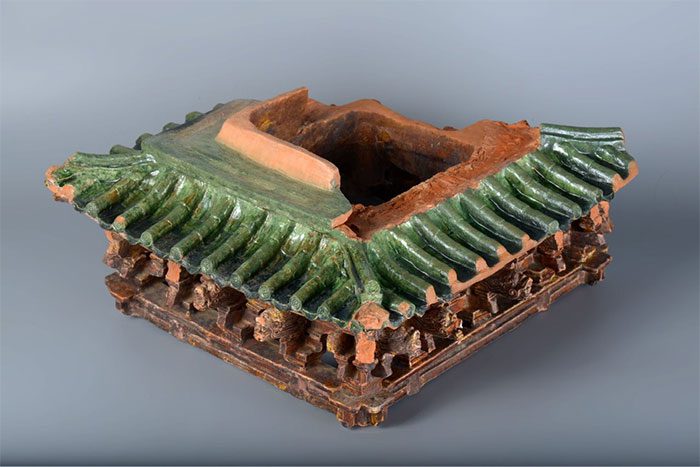
Architectural Model from the Early Le Dynasty.
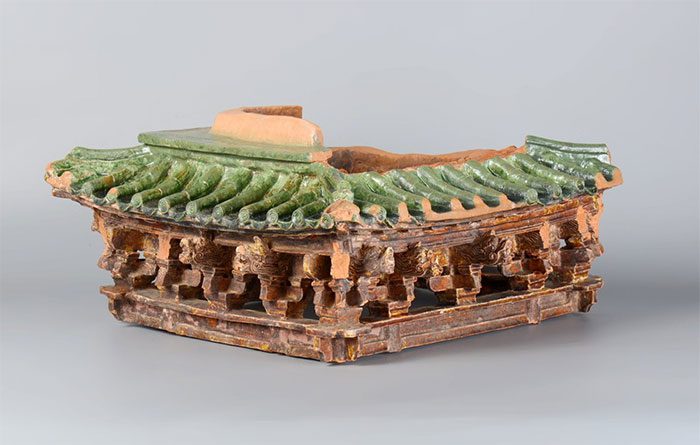
Structural Components Covered in Dark Golden Glaze.
The complete structure of the model consists of at least three parts: the foundation, a load-bearing column framework, and the roof. The architectural model from the Early Le Dynasty at the Thang Long Imperial Citadel is essentially a remnant of a completed structure. This remnant includes part of the roof and part of the structural framework, comprising the column system and the beam system.
Although not all components of a complete model have been found, it is still possible to observe the elements that make up the roof, including round beams, extending rafters, and flat eaves, with roofing tiles on top referred to as “yin-yang tiles.” The ridge tiles have rounded ends, decorated with floral motifs…
The structural components are covered in a dark golden glaze similar to that of the load-bearing framework. The roofing tiles are coated with a green glaze (celadon). From the color of the glaze, it can be inferred that the components, originally made of wood, would have been covered with yellow glaze, while the roof tiles would have been coated with green glaze.
5. Pair of Stone Dragons from the Upper Temple (Co Loa) from the Later Le Dynasty, Year 1732
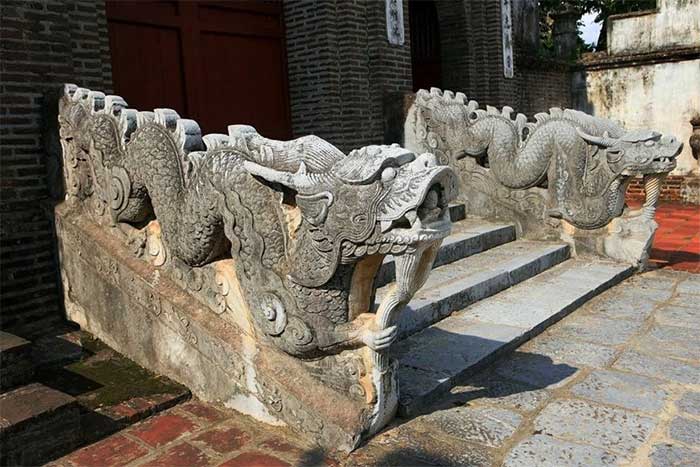
Pair of Stone Dragons from the Upper Temple (Co Loa).
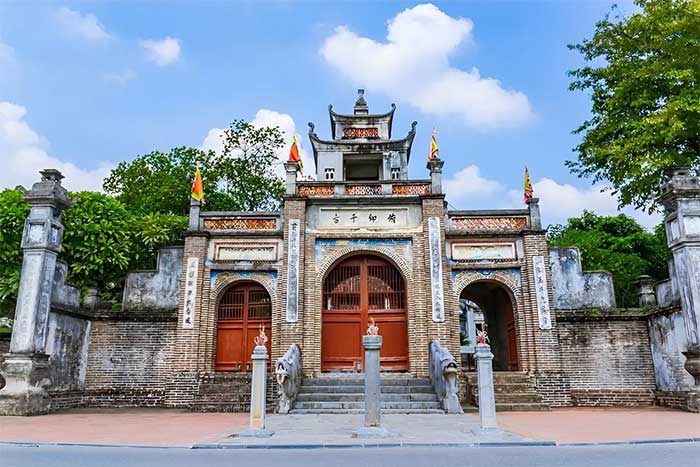
Pair of Stone Dragons in the Co Loa Historical Site.
Located in the Co Loa Historical Site, the pair of stone dragons from the Upper Temple (Co Loa) dates back to the Later Le Dynasty, in the Year of the Rat, Long Duc Era (1732), and is currently preserved at the Co Loa Historical Site, under the management of the Thang Long – Hanoi Heritage Conservation Center.
The elegantly curved stone dragons, with intricately carved whiskers, represent the sculptural art of the Le Dynasty and are valuable artifacts of the Co Loa Historical Site. To this day, the appearance of these dragons has been preserved almost intact.
In addition to the 5 national treasures managed by the Thang Long – Hanoi Heritage Conservation Center, this national treasure recognition decision also includes 3 other national treasures in Hanoi: the bronze jar with floral patterns from the 3rd-2nd century BC, belonging to a private collection of Nguyen Van Kinh.
Two national treasures are currently housed at the National Museum of History: the Sao Vang bronze drum from the Dong Son culture, dating back 2,000 years; and the An Dan sword from the Khai Dinh era (1916-1925).

















































